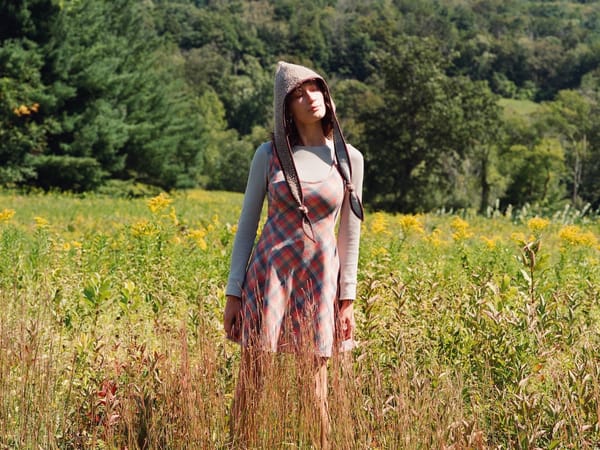A Coffee Table Book on the Way We Live: "Upstate Now"
A launch party for "Upstate Now" will be held on Thursday, October 9, 5 to 7pm, at Marton & Davis, 33 Main Street in Chatham.

A launch party for "Upstate Now" will be held on Thursday, October 9, 5 to 7pm, at Marton & Davis, 33 Main Street in Chatham.
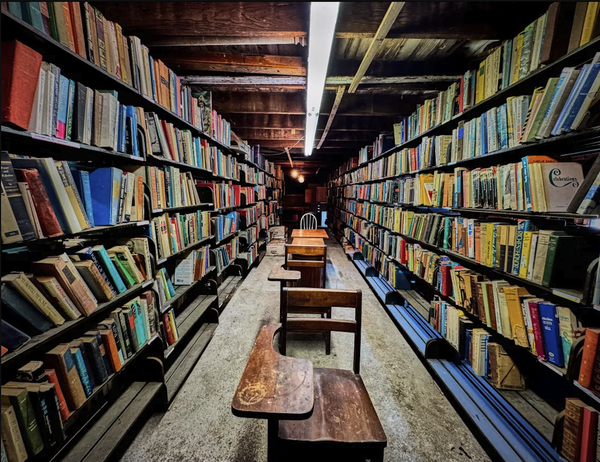
Coffee table books tend to fall into two categories: glossy aspirational catalogues for places we’ll never live, or nostalgic paeans to what’s already gone. Upstate Now—Michel Arnaud’s new visual chronicle, made in collaboration with writer Jane Creech—manages to be something different. It’s a 288-page meditation on what it means to live a creative, rooted life in the Hudson Valley and Catskills right now: neither a sales brochure nor a sepia-toned scrapbook, but a wide-angle lens on a region in motion.
Published by Princeton Architectural Press, the book is structured into four sections—A Sense of Place; Art; Design; and Food, Flowers, and Farms. Arnaud’s photographs, luminous and natural-light driven, give equal weight to a Shaker broom barn, a Dan Colen sculpture at Art Omi, and passers-by taking photographs of a field of sunflowers in full bloom at MX Morningstar Farm . The Hudson Valley, the book acknowledges, is not a monolith: it’s a braid of histories, aesthetics, and appetites, tangled and resilient.
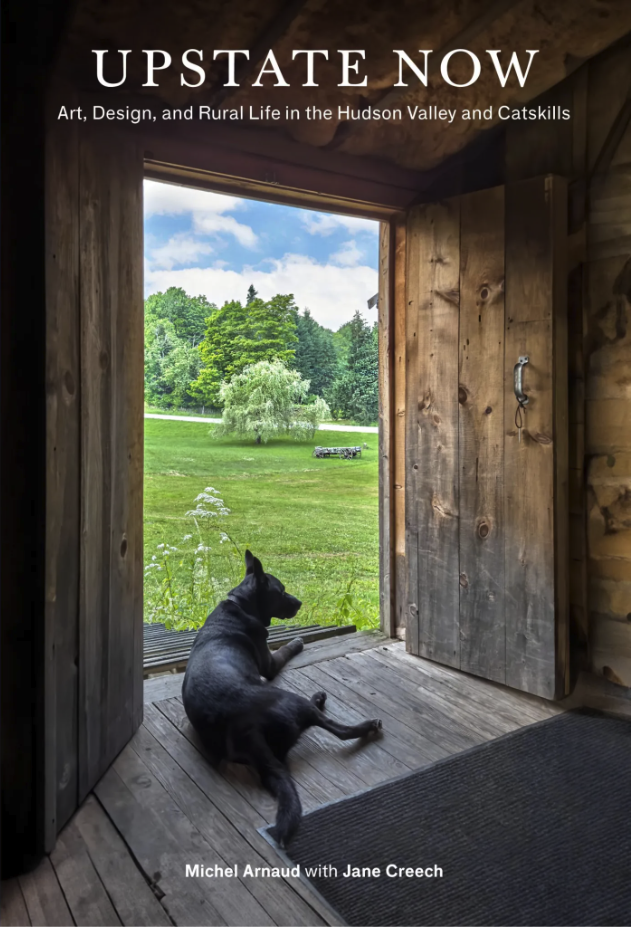
The cover of Upstate Now. Photo by Michel Arnaud.
One of the most striking profiles in Upstate Now is of Poughkeepsie-based artist Julia Whitney Barnes, who has long worked with botanical imagery. At the Watervliet Shaker Settlement near Albany, she created Planting Utopia, an installation inspired by the Shakers’ medicinal gardens and their practice of making spirit drawings. Using cyanotypes and hand-labeled herbs gathered onsite, Whitney Barnes’s work resurrects the Shaker ethos of combining utility with beauty, while also acknowledging the fragility of utopian ideals. Arnaud’s photographs capture both the austere whitewashed interiors and the delicate blue prints Whitney Barnes tacked to their walls, creating a dialog between history and contemporary art.
In Roxbury, a hamlet in Delaware County, reinvention comes in the form of the Roxbury. Built in 1963 and transformed in 2004 by Gregory Henderson and Joseph Massa, the Roxbury is a fantasia of themed rooms—part roadside Americana, part pop-culture dreamscape. Arnaud photographs its candy-colored interiors alongside the town’s modest main street, making the case that the motel did more than house visitors. It seeded a cultural revival, drawing tourists, spurring the opening of galleries and restaurants, and helping Roxbury secure a $10 million Downtown Revitalization Initiative. If Barnes reimagines the past, the Roxbury Motel shows how kitsch can catalyze the future.
No book on contemporary Hudson Valley culture would be complete without Art Omi, the 120-acre sculpture and architecture park in Ghent. Founded in 1992 by Francis J. Greenburger, Art Omi has become an international nexus, hosting artists from more than 120 countries while remaining a playground for local families. Arnaud’s camera lingers on Olaf Breuning’s powder-blue aluminum clouds, Ivan Navarro’s water-tower installation This Land Is Your Land, and children tumbling across meadows dotted with monumental works. What the book captures, and what visitors know, is that Art Omi collapses the categories of art world, town fair, and Sunday stroll. It is simultaneously global and hyperlocal, serious and playful.
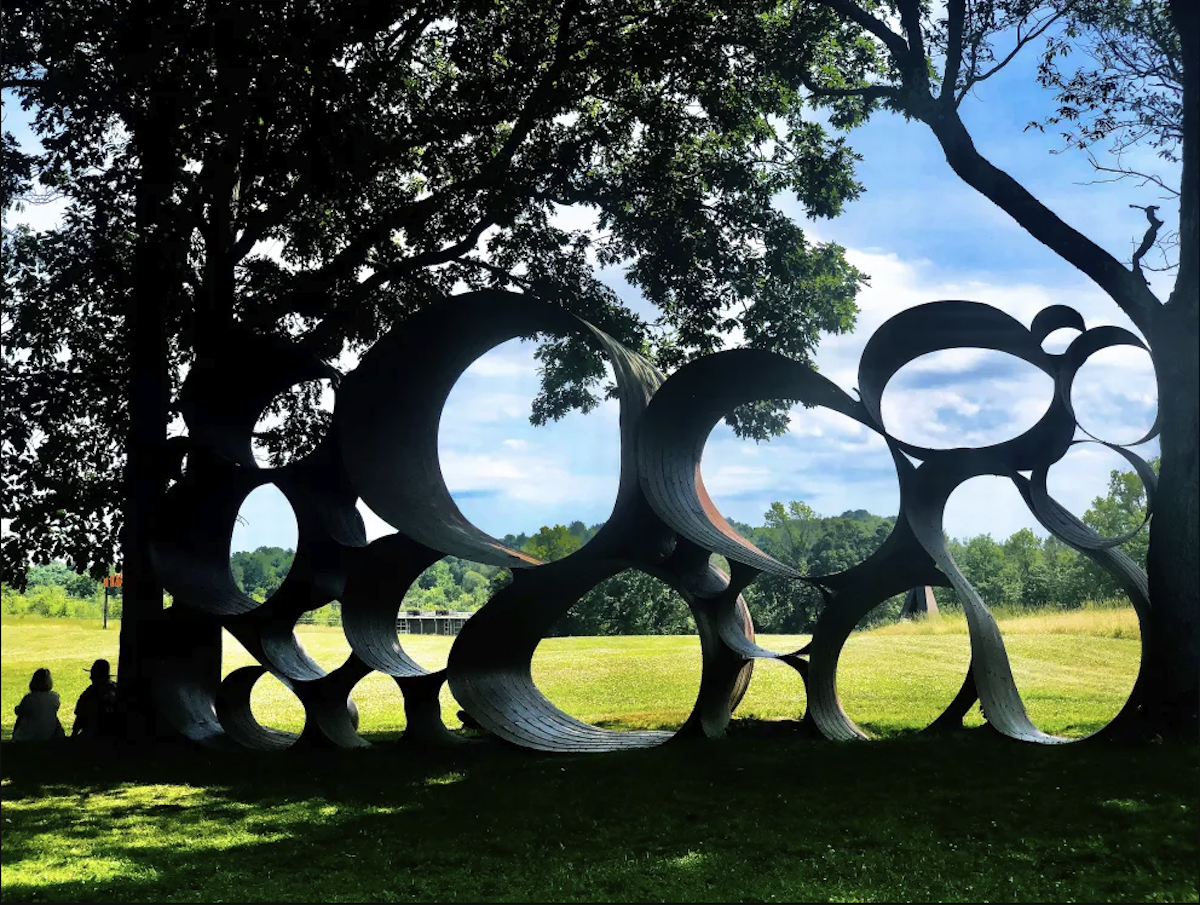
DeWitt Godfrey’s Picker Sculpture at Art Omi. Photo by Michel Arnaud.
In Kinderhook, Bill Arning Exhibitions occupies an 1812 carriage house down the street from Jack Shainman’s The School. Former director of Houston’s Contemporary Arts Museum and White Columns in New York, Arning brings a deep curatorial history to the Hudson Valley. His one-room gallery glows at night, visible from the street like a beacon, inviting passersby into shows by artists such as painter James Esber. Arnaud captures the intimacy of the space—the exposed beams, the scale of the work in relation to its domestic proportions. It’s a reminder that in the Hudson Valley, cutting-edge art often happens not in white cubes but in repurposed vernacular spaces.
Painter Caitlin MacBride, featured in the book’s art section, mines Shaker design motifs to create contemporary abstractions. Her canvases take the clean geometries of Shaker furniture and textiles and reimagine them as radiant color fields. Arnaud’s portraits of her studio capture paint-splattered surfaces and fragments of reference material, underscoring the throughline from 19th-century utopian craft to 21st-century fine art. In doing so, Upstate Now makes the argument that the region’s design DNA is not just preserved in museums but actively mutating in studios across the Valley.
For designers Chase Booth and Gray Davis, upstate life means lake life. Gray, a principal of the international design firm Meyer Davis, grew up spending summers on a Tennessee lake, while Chase’s childhood was anchored along the Pecos River. Today, their Chris-Craft speedboat bobs at a dock on Copake Lake, with a canoe reserved for paddles around the pond in front of their Craryville home. Since first being introduced to the Hudson Valley in 1994, they’ve built and lived in five houses here, moving fluidly between Adirondack style and crisp modernism.
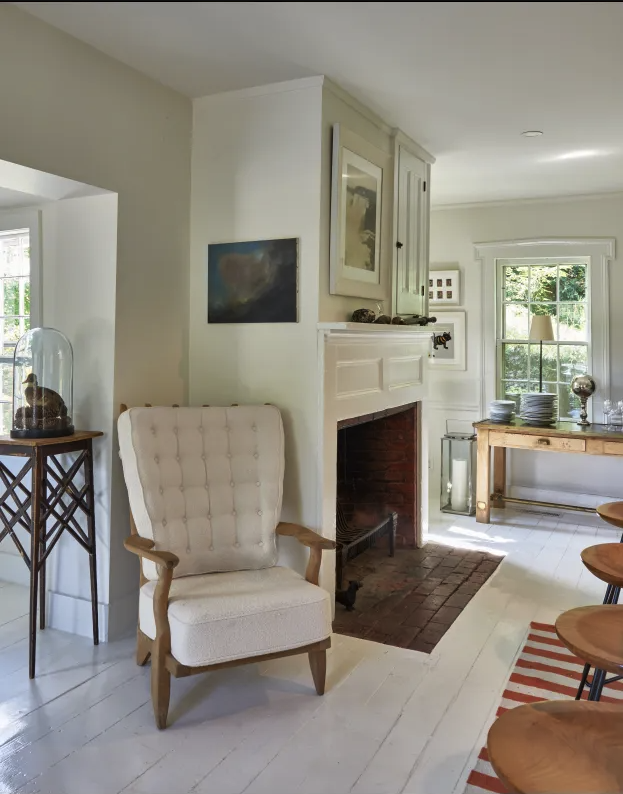
A corner in the updated kitchen of Chase Booth and Gray Davis in their 18th-century house in Craryville. Photo by Michel Arnaud.
Their current home, dating to 1792, embraces both history and reinvention: original rooms remain intact while new additions are unapologetically contemporary. A mudroom opens into a dining space with sliding doors onto the water, a screened porch became a glass-walled living room with a woodstove, and an old front parlor now serves as the primary suite. Antique finds from Hudson mix with custom interventions, but the real star is the view: water, light, and trees reflected off painted-white floors. For Booth and Davis, design is less about showpieces than about the daily pleasures of being in—and on—the water.
The most prominent architect in the book is Steven Holl, whose T Space in Rhinebeck serves as gallery, archive, and teaching hub. Holl’s presence anchors Upstate Now in a lineage that stretches from Frederic Church’s Olana to the Bauhaus emigres who summered in the Catskills. Arnaud photographs the spare, white volumes of T Space dappled with Hudson Valley light, suggesting that for Holl, drawing and building are parallel acts of translation: How to make ideas manifest in wood, glass, and shadow. The book positions Holl not just as a celebrated architect but as a neighbor, part of the upstate fabric.
At Champetre in Pine Plains, the dining room hums with intimacy. Chef Michel Jean moves from table to table, chatting with guests, while his wife and business partner Patricia drifts gracefully between the front of house and the kitchen. The couple’s earlier restaurant, Provence—a MacDougal Street institution from 1986 to 2006—was one of SoHo’s great neighborhood bistros, until post-9/11 downtown life shifted and they decamped full-time to their country home. Their new venture, opened in 2021, feels both rooted and refined: nineteenth-century Hudson River Valley landscapes, collected by Patricia over decades, cover the white walls like a salon-style gallery. Michel’s cooking is similarly steeped in tradition yet alive with invention—classic French forms reimagined with subtle flourishes. Like the paintings, the dishes pay homage to genre while finding distinction in detail. Champetre, whose very name means “countryside,” is not over-the-top fancy, but a place where precision, conviviality, and terroir converge.

Champetre, Michel Jean’s compact French bistro in Pine Plains. Photo by Michel Arnaud.
Not all food culture is reinvented. Dan’s Diner, a chrome and neon time capsule on Route 203 in Chatham, represents the enduring charm of roadside Americana. In Arnaud’s images, the curved counters gleam, pies sit under glass domes, and the morning light pours across Formica. By giving Dan’s the same visual treatment as cutting-edge restaurants, the book affirms that heritage is not just in landmarks or museums but in the everyday rituals of bacon and eggs at a booth.
At Damsel Garden in Catskill, flowers are less arrangements than performances. Forager-florists here build wild, asymmetrical bouquets that look as though they were swept together by a storm and a painter’s eye. Arnaud photographs blossoms backlit against farmhouse windows, petals falling on weathered wood. The result is less about prettiness than about the fleeting, improvisatory nature of life upstate. Like Barnes’s cyanotypes, Damsel Garden insists that the natural world is not background but subject, collaborator, muse.
Threaded throughout Upstate Now is the theme that heritage and innovation are not mutually exclusive. The Shaker past lives on in Barnes’s cyanotypes and MacBride’s paintings; new arrivals like Loew-Banayan and Arning build on older forms. Yet it’s also worth acknowledging that the book, a beautifully produced object, participates in the fetishization of place. Its natural-light photographs and lush paper stock turn the Hudson Valley into an object of desire, a commodity to be owned, even as it documents the region’s communities with care. That tension—between celebrating and idealizing—is part of the story too.
Upstate Now is not the first book to picture this region, and it won’t be the last. But it may be the one that feels most like home: messy, radiant, haunted, hopeful. It’s a reminder that the Hudson Valley is not just where we live; it’s how we live—with art on the walls, design in the bones, food on the table, and community at the center.
There will be launch party for Upstate Now on Thursday, October 9, 5 to 7pm, at Marton & Davis, 33 Main Street in Chatham. Some of the makers and farms featured in the book will be providing food and beverages.

